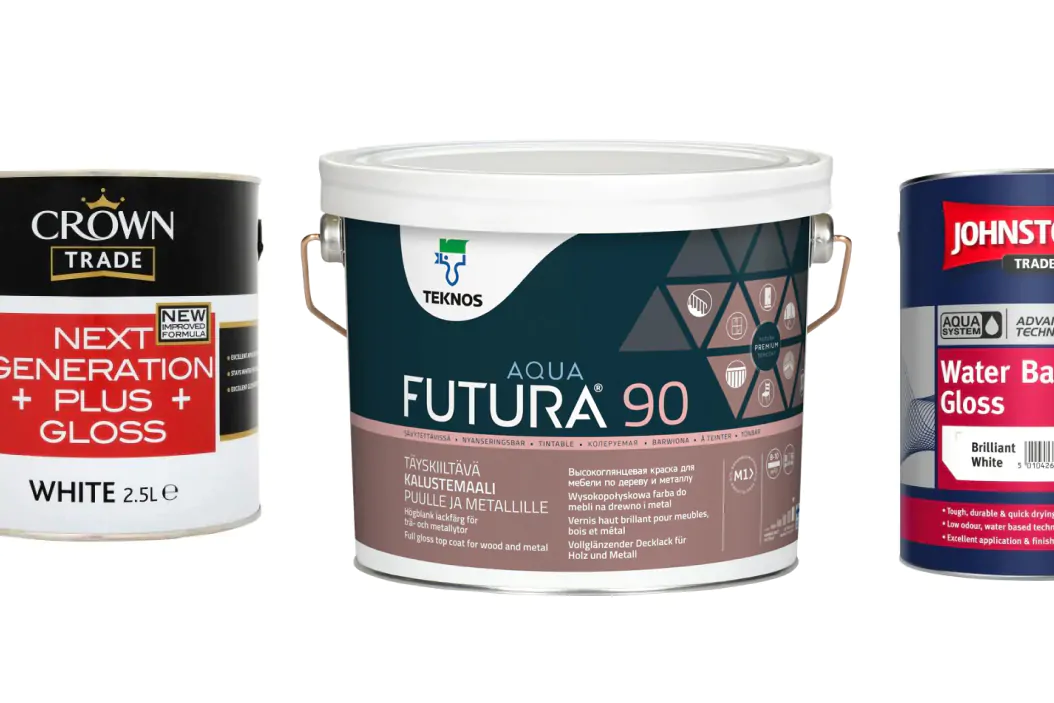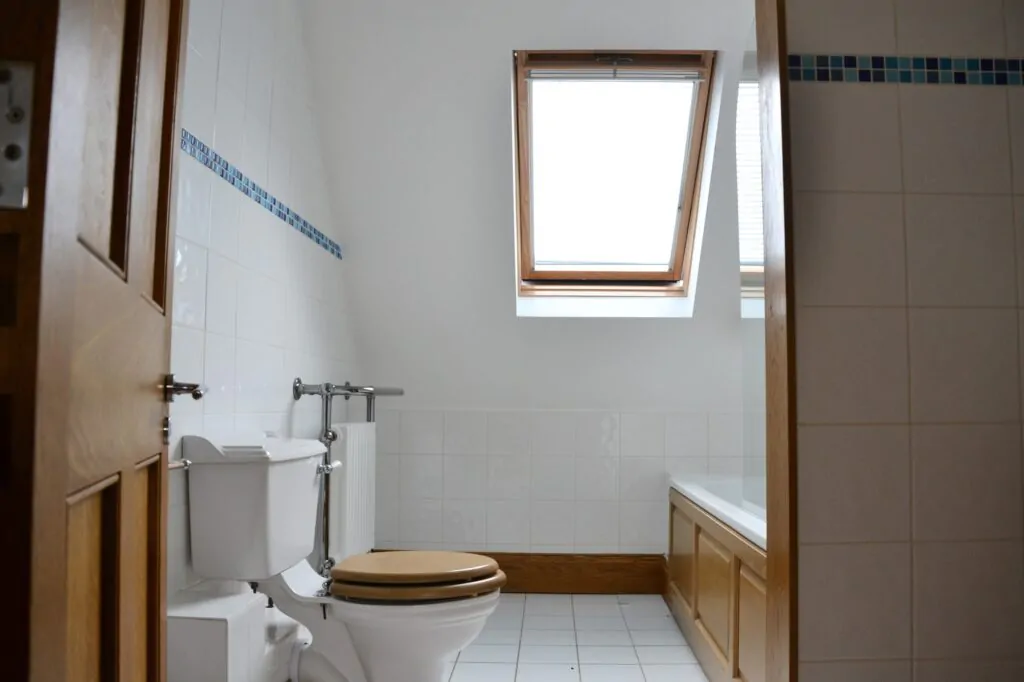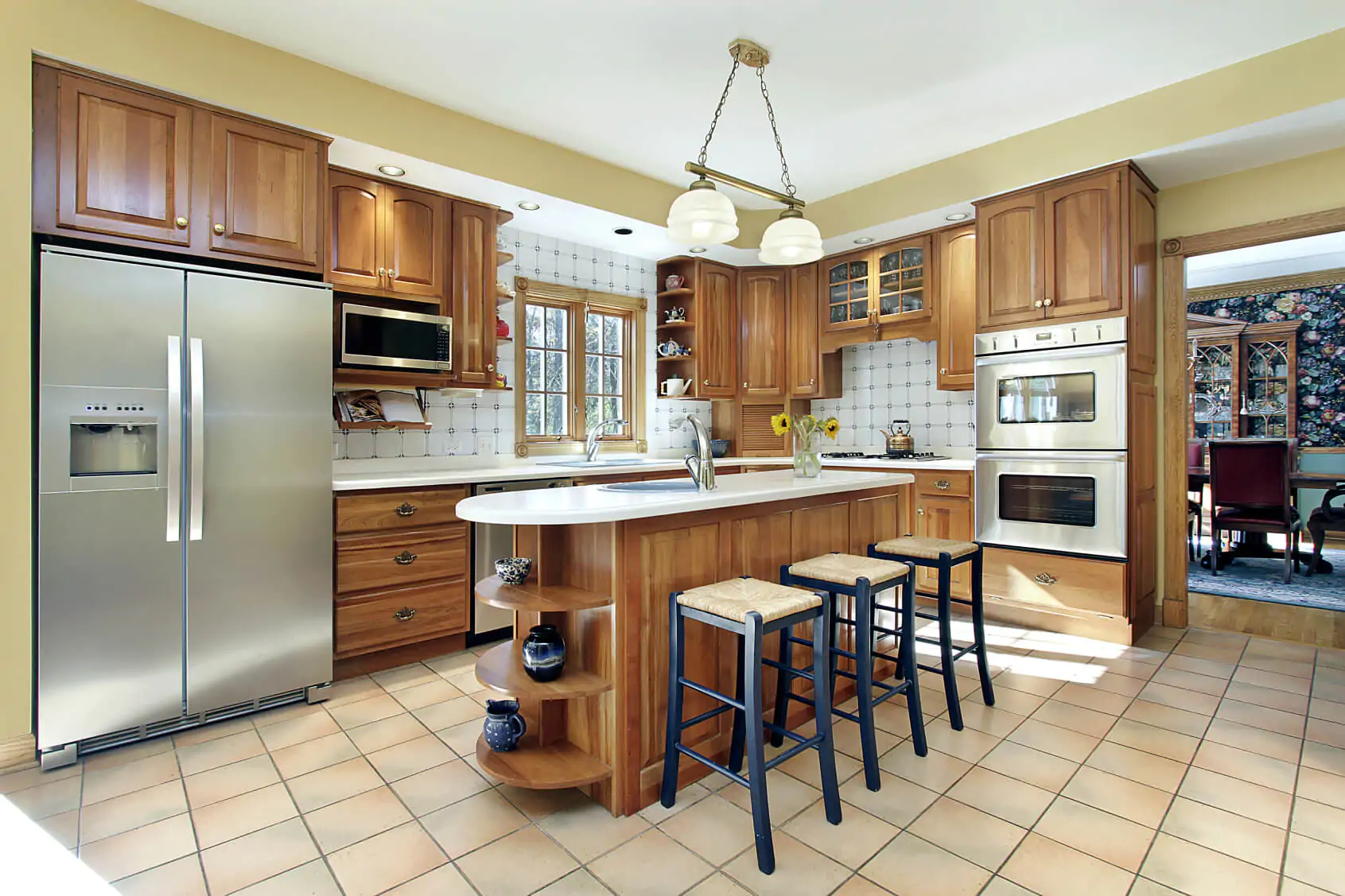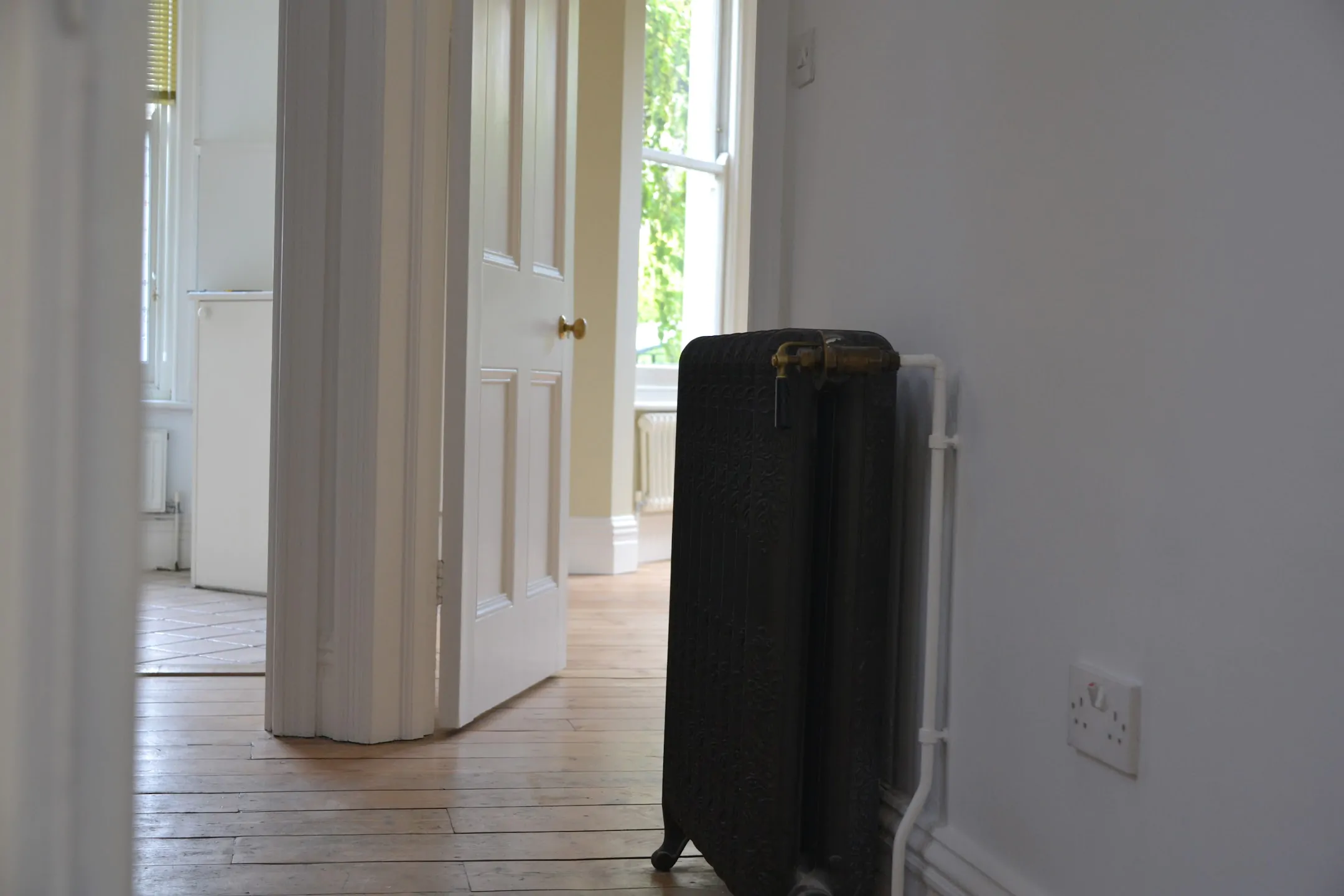

Choosing the Best Paint for Your Bathroom Ceiling
Choosing the best paint for yor bathroom ceiling can seem tricky, but getting it right is key to creating the perfect look and protecting against moisture and mould.
Even though painting a ceiling may appear straightforward on the surface, there are important factors to consider when selecting the best paint for a bathroom ceiling.
By understanding the different properties of paint finishes and how they interact with the unique conditions of a bathroom, you’ll be able to make an informed decision.
Our tips will ensure you choose the ideal paint that balances aesthetics and practicality, resulting in a beautiful, long-lasting ceiling. Keep reading for advice from expert painters and decorators on finding the best paint for bathroom ceilings.
Features of Finishing the Bathroom Ceiling
Paint has long been considered the easiest finishing material, an opinion largely attributed to the lack of variety in the past. For finishing ceiling structures, traditional whitewash was most commonly used, while paint or wallpaper treatments were less frequent.
Since then, the building materials market has evolved significantly, and the range of available products has expanded. It’s essential to understand what to use for painting ceilings in modern homes, to explore the variety of paints, and to make the right choice.
For bathroom walls and ceilings, paint remains a popular option due to several positive factors:
- Improving the quality of the ceiling finish;
- Increasing the longevity of the finish;
- Protecting ceilings and walls from moisture;
- Reducing the likelihood of condensation;
- Providing protection against biological threats.
All of the above points are important and beneficial because the longevity and quality of the coating will affect the integrity of the main structural components of the ceiling.
However, it is not always the case that bathroom ceilings are painted with sufficient quality, and as a result, cracks and delamination may appear on the surface of the ceiling, causing the coating to peel and fall off.
Three factors greatly impact the quality of the finish:
- The choice of ceiling paint: Choosing the right paint for your bathroom ceiling is crucial. For damp environments, it’s essential to select special paint formulations that offer adequate protection against moisture.
- Surface preparation: Before painting the bathroom ceiling yourself, it’s necessary to plaster and prime it, ensuring the finish adheres well and provides a smooth, even layer.
- Drying the ceiling: The bathroom ceiling should only be painted when the room is not excessively damp and the ceiling has thoroughly dried. This may require additional preparation, such as airing out and drying the room.
Painting the bathroom ceiling using the correct technique is important, but the ceiling’s maintenance also plays a significant role. It’s advisable to clean the painted ceiling periodically to prevent dirt from penetrating the coating and causing internal damage.
To facilitate easy cleaning, it’s best to use water-resistant paint that produces a smooth, even, and water-resistant finish.
Using inexpensive paints for damp rooms is not recommended, as their performance tends to be subpar. While such options may be suitable for temporary or utility structures, a higher-quality moisture-resistant ceiling paint is necessary for spaces intended for permanent use.
Advantages and Disadvantages of Bathroom Paint
Using paint to finish the bathroom ceiling offers several advantages:
- Cost-effectiveness in renovation;
- Ease of working with the material – painting the bathroom ceiling yourself doesn’t require specialized skills;
- Attractive decorative properties;
- A wide range of colors;
- The option for simple painting or creating intricate patterns.
When discussing the disadvantages, consider the following list:
- Deciding on the right paint for the bathroom ceiling requires careful consideration, as an incorrect choice may result in an unreliable coating;
- The ceiling must be leveled to a near-perfect condition before finishing;
- Humidity levels in the room will need to be monitored during both the painting process and ongoing use;
- Periodic cleaning of the ceiling is necessary to prevent the formation of biological damage.
When determining which paint to use for your bathroom ceiling, it’s essential to weigh the pros and cons of such a coating. Proceed with the work only if paint is the most suitable option for your situation.
Comparing Matte and Gloss Paint
Tip: Use our online construction calculators to quickly and accurately calculate building materials or construction requirements.
Choosing Between Glossy and Matte Paint
When deciding on the paint for your bathroom ceiling, the first step is to consider the visual characteristics of the material. There are two types of paint: glossy and matte. Glossy paint is capable of reflecting light, while matte paint does not have this effect. This means that they should be applied under different conditions.
In a small bathroom, a glossy ceiling might look inappropriate. While its reflectivity creates the illusion of slightly expanded space, this effect is negated when the ceiling fogs up. If the bathroom is large, a glossy ceiling can make it appear even larger.
However, to make the right decision on which paint is best for your bathroom ceiling, you need to consider the overall design. For instance, a glossy and shiny ceiling will look good in a spacious room, but the colours of the walls and ceiling must be taken into account.
Factors to Consider
A black ceiling finish that complements black and gold details in the interior can be a good choice. If the walls are black, then all other surfaces should be light and matte.
White and light grey glossy coatings work best for creating a reflective effect. Glossy paint on a perfectly flat surface can also serve as a mirror for the objects in the room, a factor that should be considered as well. An abundance of dark objects in the design will visually double the ceiling’s size, which may not be aesthetically pleasing.
Moreover, glossy paint, when applied to imperfect or uneven surfaces, will only accentuate them. This naturally reduces the decorative value of the finish, so it’s crucial to plaster the surface before painting. All defects, from microcracks to significant pits and bumps, must be corrected.
Inspect the ceiling for irregularities using a reflector lamp, as the beams will clearly reveal any flaws.
Advantages of Matte Paint
Matte colours are more versatile and can be used to paint the bathroom ceiling. However, you need to choose the paint wisely – not only matte and glossy colours but also semi-glossy and semi-matte options can be found on the market.
All kinds of lighting can be used for matte ceilings, unlike glossy ceilings, which reflect focused light. To avoid this effect, consider installing LED lighting or diffused lighting.
It’s also worth mentioning the varying degrees of resistance to biological factors. For instance, glossy paints offer better protection against mould and mildew – a particularly relevant concern in bathrooms.
Matte coatings aren’t inadequately protected, but compared to glossy paints, they’re not as secure. Additionally, to prevent dirt and damage, the ceiling needs periodic cleaning, and the answer to which type of paint is best for the bathroom ceiling becomes apparent – glossy paints are better suited to withstand such influences.
The Choice of Paint
Selecting the right paint for the ceiling must be approached with great care, as choosing poorly can lead to unpleasant consequences. It’s important to state upfront that cheap paints from little-known manufacturers should not even be considered. They may contain aggressive chemicals that will inevitably be released when the room is in use. This is certainly not a viable option for indoor spaces.
Paint should be purchased at specialized stores. The cost of the material may be higher than in other markets, but it’s necessary to pay for quality. In addition to compliance with environmental regulations, there is also a guarantee that the materials have been stored in the proper conditions.
When buying, it’s important to read the paint’s instructions, which should always indicate the following:
- The rooms where the paint can be used – exterior or interior;
- The conditions for storage and use;
- The expiration date and application technique.
Being aware of these parameters and paying attention to detail will allow you to choose high-quality paint that can serve effectively for a long time.
Of course, one of the most crucial details is the paint’s suitability for use in wet areas – after all, we are discussing bathrooms, where material lacking moisture resistance will not be able to perform its intended function.
From a financial standpoint, skimping on bathroom paint is a questionable idea. The reality is that the ceiling area in such rooms is usually quite small, so it will require only a modest amount of material to paint it. Even when purchasing expensive formulations, the final cost will not be excessively high.
A variety of paints, both foreign and domestic, can be found on the market. Both are noteworthy – each price segment offers options that meet all standards and requirements. However, the highest-quality products come from the UK’s leading manufacturers, including:
- Crown Paints;
- Dulux;
- Farrow & Ball;
- Johnstone’s.
These manufacturers offer several products that are ideal for finishing bathroom ceilings.
Paint Properties
The primary property that all paint formulations designed for use in bathrooms share are resistance to moisture and steam. All other properties may vary – for example, the material on which the paint will be applied plays a significant role. To decide which paint is best for your bathroom ceiling, you need to familiarize yourself with the characteristics of the different formulations.
The basic properties of the different types of paint are as follows:
- Silicone paints, once applied and cured, form a protective film. Subsequently, the coating is easy to clean and remains almost dirt-free, especially if the paint is used to decorate the ceiling.
- Acrylic water-resistant paints are easy to apply and fairly reliable. This type of paint is good at masking minor surface imperfections and can be damp-cleaned. Acrylic paints are used much more frequently than other types.
- When concrete slabs need to be painted, silicate paints are the most popular choice as they are resistant to biological damage, such as mould and mildew. Once applied, such paint does not conceal but rather emphasizes all the defects of the surface, and therefore it needs to be properly levelled before work.
- Water-based paints are very similar to their natural counterparts, like whitewash. When water-based emulsion paint is applied, it will start to chafe if cleaned frequently. If the paint is allowed to over freeze, it will crack and crumble, so it is not recommended to use it to paint the ceiling in homes with seasonal residences.
Latex paint differs from all of the previous types due to its lack of steam permeability. It is not recommended to use it in cold rooms, as condensation will appear on the coating, which can damage the ceiling. However, the paint itself is resistant to moisture, so it can be used in certain situations.
The last option, which is best not even considered when it comes to bathroom ceilings, is oil-based paint. Once cured, such bathroom ceiling paint will form a vapour barrier that will interfere with the normal ventilation of the room. Oil paint can only be used in large bathrooms where the humidity level is minimal.
Regardless of the type of paint, the following preparations must be carried out before painting the bathroom ceiling:
- Thoroughly dry all surfaces in the room;
- Ventilate the room;
- Remove any drafts;
- Warm the room to a normal temperature and turn off the heating;
- If necessary, close the ventilation if it is causing a noticeable draft.
Properly preparing the bathroom ceiling for painting will result in a high-quality and reliable finish.
In conclusion, when deciding what to paint your bathroom ceiling with, it’s essential to evaluate all the available options and determine how suitable they are for your specific situation. Making the right choice will lead to a high-quality and long-lasting finish that can effectively perform its intended functions.


